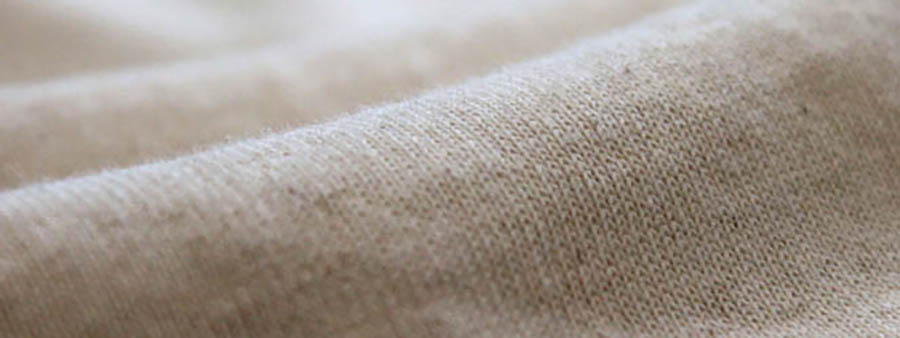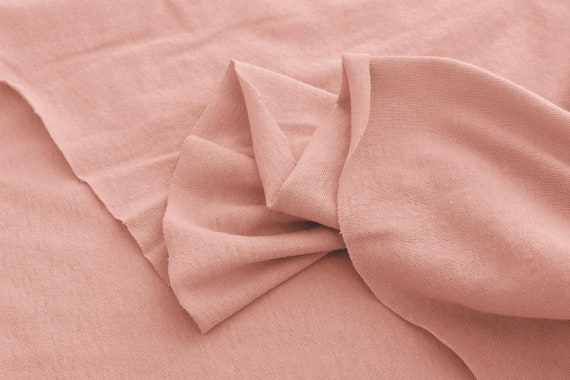
Fabric Types Explained: Unraveling the Threads of Your Wardrobe
by Natalia Emilse Elbaba on Feb 28, 2024From the comforting embrace of a cotton T-shirt to the luxurious drape of a silk dress, fabric plays a central role in shaping our clothing and defining our personal style. But navigating the vast array of options can be overwhelming. Fear not, fashion enthusiasts! This guide offers a comprehensive exploration of common fabric types, empowering you to make informed choices for your wardrobe and beyond.
Natural vs. Synthetic: The Fiber Fundamentals
Our journey begins with understanding the origin of fabrics: natural fibers and synthetic fibers. As the name suggests, natural fibers are derived from nature's bounty - plants, animals, and even minerals. Cotton, linen, wool, and silk are prime examples, each offering unique properties.

Cotton, for instance, is renowned for its breath-ability and comfort, while wool provides warmth and insulation. Conversely, synthetic fibers are man-made, created from various elements. Polyester, nylon, and acrylic fall into this category, often boasting advantages like wrinkle resistance and durability.
The Weave of the World: Construction Matters
Beyond the fiber itself, the way individual threads are intertwined determines the fabric's appearance, feel, and behavior. This intricate process is known as weave. There are two main weaving styles:
Woven Fabrics: These involve interlacing perpendicular threads, forming a grid-like structure. Common weave styles include:
Plain Weave: The simplest and most ubiquitous, creating a smooth, even texture (think cotton T-shirts).
Twill Weave: Threads are diagonally interwoven, resulting in a sturdier fabric with a subtle diagonal pattern (denim, corduroy).
Satin Weave: Yarns are interlaced with long floats on one side, creating a luxurious, shiny fabric (satin, silk).
Knit Fabrics: Unlike woven fabrics, knit fabrics involve interlocking loops, creating a stretchy and flexible material. Think of a hand-knitted sweater, where each loop seamlessly connects to its neighbors.
A Fabric for Every Occasion: Choosing the Right One
Understanding the properties of different fabrics empowers you to make informed choices for your projects and wardrobe. Here's a glimpse into some popular options:
Cotton: A versatile and breathable natural fiber, perfect for everyday clothing, bedding, and towels.
Linen: Strong, absorbent, and known for its crisp drape, ideal for summer clothing and table linens.
Wool: Warm, insulating, and naturally wrinkle-resistant, perfect for winter clothing and blankets.
Silk: Luxuriously soft, breathable, and drapes beautifully, often used for formal wear and delicate garments.
Polyester: Wrinkle-resistant, durable, and readily available, a popular choice for active-wear and synthetic blends.
Nylon: Strong, lightweight, and fast-drying, often used for sportswear and athletic wear.
Beyond the Basics: Explore the Fabric Universe
The world of fabric extends far beyond these staples. From the delicate shimmer of chiffon to the cozy warmth of fleece, countless options exist to cater to every need and style. Embrace the opportunity to experiment! Explore specialty fabrics like velvet, lace, or brocade to add a touch of luxury or individuality to your projects.
Remember, understanding fabric types empowers you to make informed and creative choices, transforming your wardrobe and craft projects into personal expressions.
Delving Deeper: A Look at Cotton's Cousins
Now, let's delve deeper into the world of cotton, exploring its variations and their unique characteristics:
Regular Cotton

The go-to fabric for clothing, offering a soft touch and good breathability. It's ideal for everyday wear or promotional items, but may not be as luxurious as other cotton options.
Ringspun Cotton

This type of cotton takes softness to a whole new level. The yarn is twisted and thinned more than regular cotton, resulting in a durable and incredibly soft fabric with a tighter weave, perfect for higher-quality clothing and screen printing.
Combed Cotton

Typically used for bed linen due to its exceptional softness, combed cotton utilizes a special process to remove impurities and shorter fibers, creating a cleaner and smoother yarn. This translates to a more luxurious feel and less fraying, making it ideal for premium clothing and uniforms.
Peached Cotton

This unique fabric undergoes a special finishing process, creating a super-soft surface with a slight "fuzz." Perfect for both premium children's clothing and high-quality casual uniforms, it offers a luxurious touch rarely found in standard cotton.
Moving beyond natural fibers, we encounter polyester. This man-made material, derived from various elements like coal and air, offers a smooth and slightly shiny texture commonly found in sportswear.


